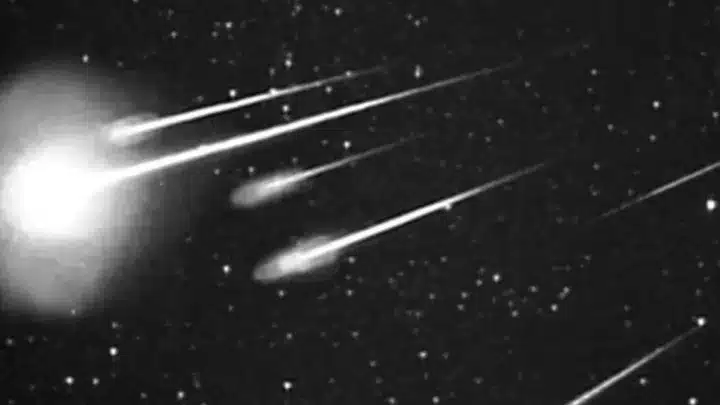The Leonid meteor shower is one of the most popular because of how amazing of a site it is to behold. During the Leonid meteor shower, upwards of 250 meteors are produced during the peak and those meteors are often fireballs that blast through the sky, which makes it that much cooler of a show.
While the Leonids have technically been going on now for a few weeks, they will peak on the 17th and 18th, and be visible in the sky around 7:00 p.m EST. The shower will continue until December 2nd, alongside the Taurids. While the Taurid meteors move slowly through the sky, the Leonids zip through the sky quickly.

A burst of 1999 Leonid meteors as seen at 38,000 feet from Leonid Multi Instrument Aircraft Campaign (Leonid MAC) with 50 mm camera. (Image Credit: NASA/Ames Research Center/ISAS/Shinsuke Abe and Hajime Yano)
The Leonid shower is produced by the debris that comes from the Comet Tempel-Tuttle, and each year around this time, our planet moves through that debris, providing us with quite the show. Typically, the shower can be somewhat sparse, except for the exception that occurs every 33 years when we hit a dense pocket of meteors, this one is supposed to be special as well.

At 1:45 am MT on Nov. 17, NASA’s all sky camera at the New Mexico State University caught this image of a Leonid meteor streaking through the skies. (NASA)
The American Meteor Society says that we should end up hitting a different dust field that will produce anywhere between 50-200 meters per hour! But, some speculate it could be more than that. Unfortunately, space weather can be somewhat unpredictable, so it is honestly hard to tell.

Over 100 meteors are recorded in this composite image taken during the peak of the Geminid meteor shower in 2014. (Credit: NASA/MSFC/Danielle Moser, NASA’s Meteoroid Environment Office)
The best way to observe the peak is to go outside during the peak and find a dark place to view it. Lay on your back, and look towards the constellation Leo. You will need to allow your eyes to adjust, so it may take about 30 minutes before you begin seeing the shooting stars.
If you miss them, the Geminids will also come along on December 14, followed by the Ursids.

